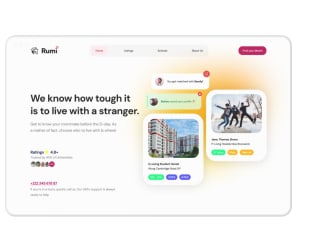Cube Mobile A user-centric approach for seamless Logistics Opera

Gerald Mwanu
Karirana is a Tea manufacturer running operations for their product across diverse geographical regions. My primary role was to design a user-centric solution in the form of a SaaS logistics web application.
The Main Issue
In the past couple of months, the company had been noting the increase in errors from their current logistics management solution. Trailing the problem further down after a quick audit, we discovered that this is mainly by new employees who after receiving induction, had quite a hard time trying to understand and navigate the solution.
The current system's poor information hierarchy decreased productivity and caused more harm than good. Information was coupled up, drop downs were too long and there was no balance between functionality and visual appeal.
How might we restructure and improve the entire onboarding process for new users to see through accurate job execution?
We thought this was a piece of cake, but....
Despite the existing design challenge, we had one big setback at this point, TIME! The system was huge(dozens of inter-relating components), the employees were always on the move & trying to map out the entire system to re-design it in its entirety within two months was just hectic and practically impossible
Research
To get the ball rolling, we immediately started research, conducting in-depth user interviews with available employees and fresh hires, off work hours
From interview feedback and data clustered in affinity maps, we clustered the common themes arising into four main categories:
- Onboarding,
- Communication breakdown and collaboration,
- Technical constraints and
- Operational workflow.
Interesting Findings
With the little time to work on insight generation, we uncovered that not only did the initial challenges exist, but also a plethora of recurring problems were cropping up. The rabbit hole just kept growing deeper and deeper.
The most surprising revelation was the extent of reliance on informal communication channels among logistics professionals. Despite the industry's digitalization, a significant portion of critical information, especially concerning real-time updates and unexpected changes, was being conveyed through personal mobile messaging apps and calls.
This unexpected finding became the catalyst for a paradigm shift in the project, prompting the decision to pivot the design focus towards a robust real-time communication and collaboration feature that was interactive.
This shift not only addressed a critical pain point but fundamentally transformed the project's direction, aligning it more closely with the nuanced communication needs of the company's employees.
Insight Generation
Onboarding for new employees was quite a challenge that left the company with a blow for quite some time, but so was the communication off record. We had to brainstorm on this problem & try to phase out informal and unprofessional ways of conveying information from drivers to warehouses and operations.
As conflicting as it was, we still highlighted the following statements to potentially give areas of exploration which we could couple up and use in the ideation phase.
Turning Insights Into Ideas
To bring out high level design ideas quickly, we chose the crazy 8’s technique, referring to the insights clustered from the affinity map and came up with some quite interesting ideas which could become features, subject to prioritization.
- Streamline onboarding Experience with tooltips
- Intuitive navigation redesign
- Real time updates dashboard
- Integrated Navigation tools
- Internal communication & realtime chat
- Real Time tracking
- Automated post-delivery reporting
Low fidelity wireframes

Feature Prioritization
After having multiple brainstorming sessions, we classified suggested features according to their urgency, severity of their lack, and potential impact.
We chose to create an easier navigation and onboarding experience through tooltips/a help center and improved the communication process by creating an in-application chat-box with real time customer service agents having the ability to track orders and respond to queries. Was this enough to serve user needs? Could we induce impact through this?
Testing Iteration & feedback
From our target users, we got some interesting feedback that would help us in making the solution serve more of their needs. These two quotes were highlighted:
- Categorize Messages according to priority
“The chat feature/communication hub is a step in the right direction, but there is room for improvement in terms of categorizing and prioritizing messages. It can get a bit overwhelming during peak hours.”
- Show delays
“While the real-time tracking is great, I’d love to see more detailed information on potential delays or obstacles during my deliveries and through routes. This can enhance my ability to plan ahead.”
High Fidelity Designs - The solution

Initially, a web application would do the job but we thought about drivers who still use phones to make communication with operations. Why not use the same platform to see through they do the same but with a mobile application?
In an attempt to achieve the goal of integrated navigation tools and seeing through drivers saw delays, we proceeded to have the tracking feature and a map on the app. Also, we designed a simple chat feature to facilitate communication between drivers and operations.
The decision was as a result of categorizing features on a scale of impact against effort. Due to limited time, the features with the highest impact and required less effort were chosen for implementation.
Resolutions
- Our initial goal was to make sure that new employees found it easier to navigate through the system, having it more user-centric. However, user research revealed that there were more pressing concerns that needed solving, quite a turn of events which I as a designer found my way through feature prioritization and the impact versus effort scale.
- Streamlining operations resulting from app redesign led to improved efficiency across the logistics chain making impact on the business’ revenue and ROIs.
- I took on this project like a design sprint and learnt how to empathize with a user group within limited time, interviewing a pretty diverse set as representatives of a larger population.



